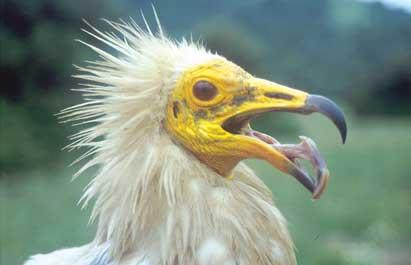Strange culture and life forms
2001/05/06 Imaz Amiano, Eneko - Elhuyar Zientziaren Komunikazioa
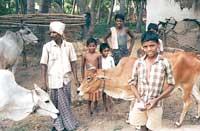
It is true that such issues are not easy to address and have sparked numerous debates, including among experts. But well, we will try to explain why a culture and a custom that seems strange to us and that serves to reflect, if not more.
Who hasn't seen a photo of an Indian cow walking down the street? Those who were there would also see the cows on a quiet walk and next to them a poor man who doesn't have much to eat. And yet the cow cannot die and eat, because they are sacred.
Seen from Western culture, it doesn't make much sense. Many experts have stated that cow worship is the leading cause of poverty and hunger in India. It has been said that in India there are one hundred million cows competing for food with ‘useless’ and more useful and human animals. As if that were not enough, these cows give very little milk and are able to raise one or two calves in their life. In any year half of Indian cows do not give milk.
In addition, in some regions of India they are very strict about the ban on killing cows and hostilities have been frequent among Hindus and Muslims, who have labeled Muslims as cow killers (Muslims do not kill pigs but kill cows). This can be one of the causes of the ‘historic’ concern between India and Pakistan, among others.
These cows, which are properly cebu, are very hard and are able to withstand the large droughts that abound. Despite their poor appearance and their futility, when the rains arrive they are able to tone, fatten, raise and give milk.
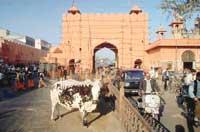
It should not be forgotten that in rural areas of India tractors use oxen to work here, that is to say, to cultivate land and carry carts (in rice areas prefer male buffalo). And, of course, oxen are needed. A Western peasant would be lost if he could not destroy and repair the tractor or buy a new one. The Indian peasant remains in the same situation if his ox dies or becomes ill. Therefore, even if only for that reason, it is advisable to have a high number of cows. On the other hand, it must be borne in mind that India does not have much oil and that, therefore, petroleum fuels must be acquired externally. If the tasks were mechanized they would facilitate the tasks, but they would also greatly increase the costs and today thousands and thousands of farmers who could survive with such modest agriculture could not advance. Buy, care and repair the tractor and also buy fuel to make it work. Oxen do not demand so much work and replacement cows are not expensive, as we have said they are very hard and almost all persist grazing.
Thus, the main function of Indian cows is to be calves in good times and not to give milk. That is why a farmer can suffer cows that barely give milk. And also, the little milk they can give is very useful to complete the diet.
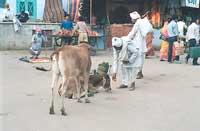
Moreover, in most regions of India forests are scarce and it is not easy to get fuel for cooking. Oil is also expensive. So what to do? Use Cow Feces. In the large western fields tractors are used, so there is no manure to cure the fields, it is necessary to use chemical fertilizers. Most peasants in India, fortunately or unfortunately, do not have access to the ‘chemical oil tractor’ cycle, but have a lot of manure. In each family there is someone who will chase the family cow and who will receive the manure, because it gives a fire for the clean and durable kitchen. In addition, mixed with water, they make a paste to put it on the floor of the house. This paste hardens when dried and becomes an easy to clean floor. In cities, the task of the caste of intangibles is to collect excrements. Likewise, the members of this caste have permission to work the skin and thus India has achieved an important leather industry. Of course, cow excrement is also used as fertilizer.
In India, cows produce about 700 million tons of manure. About half is used for manure and most of the rest for kitchen fuels, equivalent to 27 million tons of kerosene or 35 million tons of coal or 68 million tons of wood.
Three other reasons not to kill cows are manure, fuel and how to get soil for home.
Therefore, if the farmer who is most affected by hunger killed the cow, he would get meat or money for a few days, but when the monsoon arrived he would not have a fattening cow, or he would not have a calf cow and could not replace the sick or dead ox, or he would not have fuel to cook or would not have the possibility of putting a firm and clean soil at home. And to continue being a farmer, you should buy a tractor to plant the land, buy fuel and buy cement to make the soil.
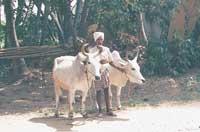
That demands money, and since most peasants don't have that money and don't have access, once the gut is filled or squandered the money obtained, it should go from the rural area to the city. But in India that is not a good opportunity, because cities have long been filled with people who have no work.
And all this also has to do with the environment. In short, the energy efficiency of a cow in India (the number of calories it consumes divided by the number of calories it provides) is 17% and that of a western cow of 4%. That is, more energy or fodder is needed and therefore more field and grass to feed a western cow. And if more crop fields or pastures are needed, further transformation of the environment is needed.
Therefore, it may seem strange and incomprehensible to us to worship cows in India and for them that has become religion, but it is also a socio-economic form of social formation and balance between the human population and nature. It does not correspond to what we call a welfare society.
And what about the pig?
The Hindu is not the only culture that for us is “curious”. In the text we also mentioned Muslims. For Muslims it is the forbidden pig. Regardless of religion, it doesn't seem to make much sense, doesn't it? Religion forbids them to eat pork, but when these religions were founded, they could not even intentionally grow pigs for a long time.
Keep in mind that the Muslim and Jewish religion was born in the Middle East, which is a rather dry territory. In open and semi-mature places, many human groups were nomads and it could not be said that the pig is good for those lives and those lands. Pigs must be provided with forest, or at least shade, and minimum humidity.
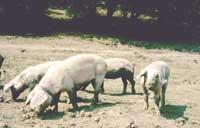
If there is no moisture they tend to get wet in their droppings and pixels, that is, they become dirty. If there were non-nomadic human groups in the oases and apparently the pig would have been able to last well, but bear in mind that the pig eats everything, as well as fruits and seeds that human beings eat. This would require that many of the resources that are useful to humans go to pigs, reducing their ecological efficiency (to lower efficiency the more resources are between the base food and the final product).
Therefore, pigs were not fit to grow in oases either. In this context it is easier to say that the pig is dirty, carrier of diseases, etc. and, finally, ban eating pork. Well, of course, other ‘curious’ cultures, but many of them can become understandable with a deep reflection on ecological resources. Cultures that produce huge pork meals every 20 years, that constantly face conflicts and tribal wars, that tend to steal animals and women from the neighboring tribe, cultures that like to say that they own a huge wealth, witchcraft... many have to do with the duration of the group and that of limited ecological resources.
Published in the supplement Natura de Gara.

Gai honi buruzko eduki gehiago
Elhuyarrek garatutako teknologia






